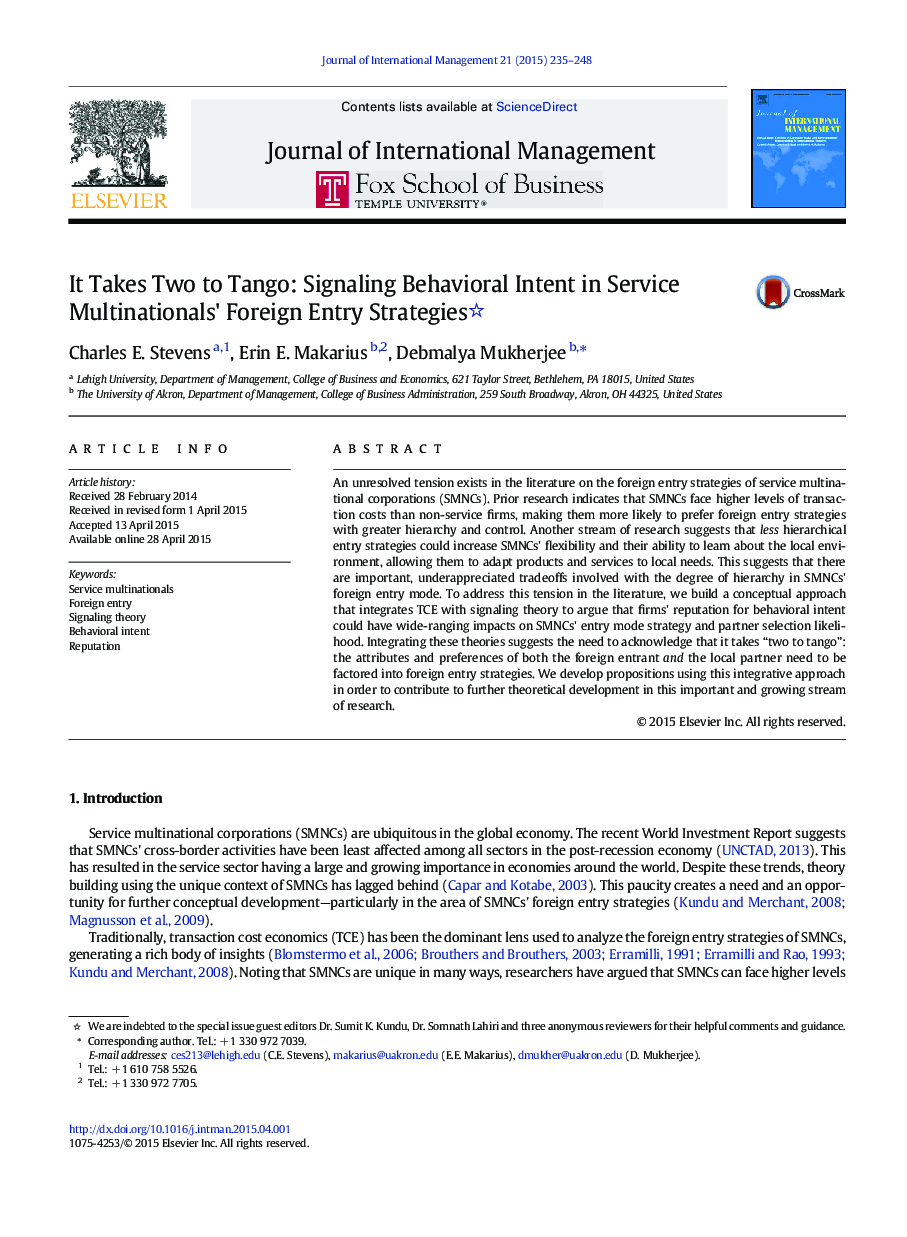| Article ID | Journal | Published Year | Pages | File Type |
|---|---|---|---|---|
| 1020228 | Journal of International Management | 2015 | 14 Pages |
An unresolved tension exists in the literature on the foreign entry strategies of service multinational corporations (SMNCs). Prior research indicates that SMNCs face higher levels of transaction costs than non-service firms, making them more likely to prefer foreign entry strategies with greater hierarchy and control. Another stream of research suggests that less hierarchical entry strategies could increase SMNCs' flexibility and their ability to learn about the local environment, allowing them to adapt products and services to local needs. This suggests that there are important, underappreciated tradeoffs involved with the degree of hierarchy in SMNCs' foreign entry mode. To address this tension in the literature, we build a conceptual approach that integrates TCE with signaling theory to argue that firms' reputation for behavioral intent could have wide-ranging impacts on SMNCs' entry mode strategy and partner selection likelihood. Integrating these theories suggests the need to acknowledge that it takes “two to tango”: the attributes and preferences of both the foreign entrant and the local partner need to be factored into foreign entry strategies. We develop propositions using this integrative approach in order to contribute to further theoretical development in this important and growing stream of research.
